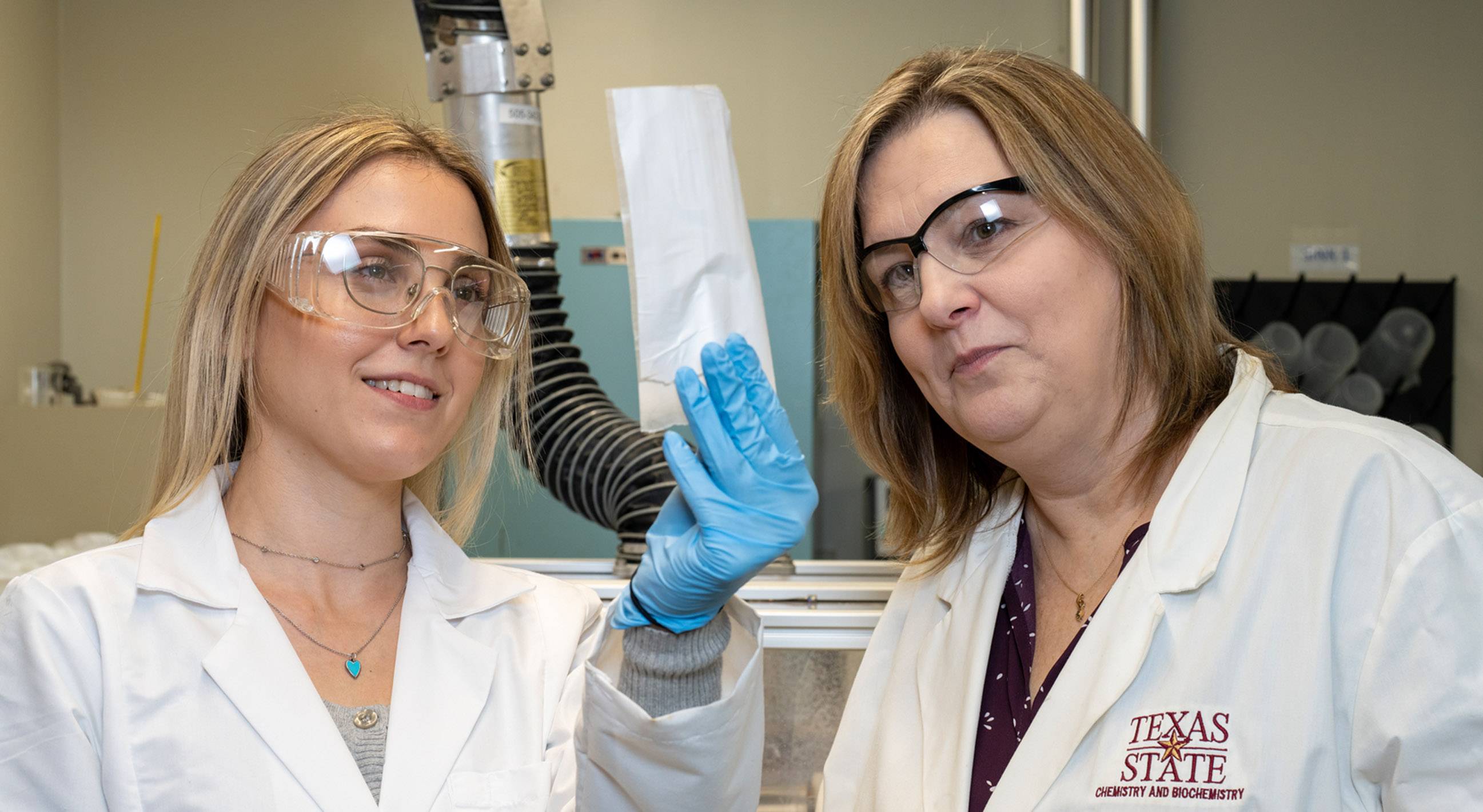Picture a small fibrous mat floating on a stream or lake, at home like a lily pad among its natural surroundings. But there’s more than meets the eye to this scene: As the mat floats, it’s removing pollutants from the water using energy from the sun.
Bathed in Sunlight

Dr. Jennifer Irvin and her students utilize solar-powered chemistry to remove harmful pollutants from water, potentially providing simple solutions for water treatment in remote areas.
At the Irvin Research Laboratory, chemistry and materials science professor Dr. Jennifer Irvin is working with her students to advance this deceptively simple solution to a complex problem.
“In developing countries or very remote locations where you can’t build a water treatment plant, you need another option,” Irvin says. “Our material is a passive system that can be tossed out there in the sunlight to purify the water.”
To make the mats, Irvin and her team spin nanofibers of polymer membrane embedded with titanium dioxide. Through a reaction called photocatalysis, the titanium dioxide harnesses sunlight to degrade contaminants into smaller molecules of carbon dioxide and methane.
So far, Irvin’s students have studied applying the polymer nanofibers to cleaning up toxic dyes in runoff, which could be beneficial in countries with big textile industries like India. They are also looking at cleaning up hormones contained in waste runoff from dairies, which could be beneficial on the Brazos River in north-central Texas.
Melany Bouyer, a junior from Austin and a student in Irvin’s lab, presented her research on “using polymer nanocomposites and sunlight to remove estrogens from wastewater effluent via photocatalytic degradation” at last fall’s Honors Research Conference.
Hormones given to livestock have been found to seep into groundwater and can potentially cause reproductive problems for various organisms, such as amphibians, she explains.
“I became interested in pursuing chemistry to understand the inner workings of the natural world and find a way to conserve natural habitats,” says Bouyer, who was awarded a Quanta Services Fellowship for her research. “The water purification project with the Irvin Research Group proposes a promising way to do just that.”
The lab plans to expand its research in the coming months to test the polymer mats in the field and to target additional contaminants. The distinguishing aspect of their work is the conducting polymer, Irvin says, which allows sunlight to fuel the decontamination process.
“As the mats sit in the sun, the sunlight catalyzes water purification,” she says. ★